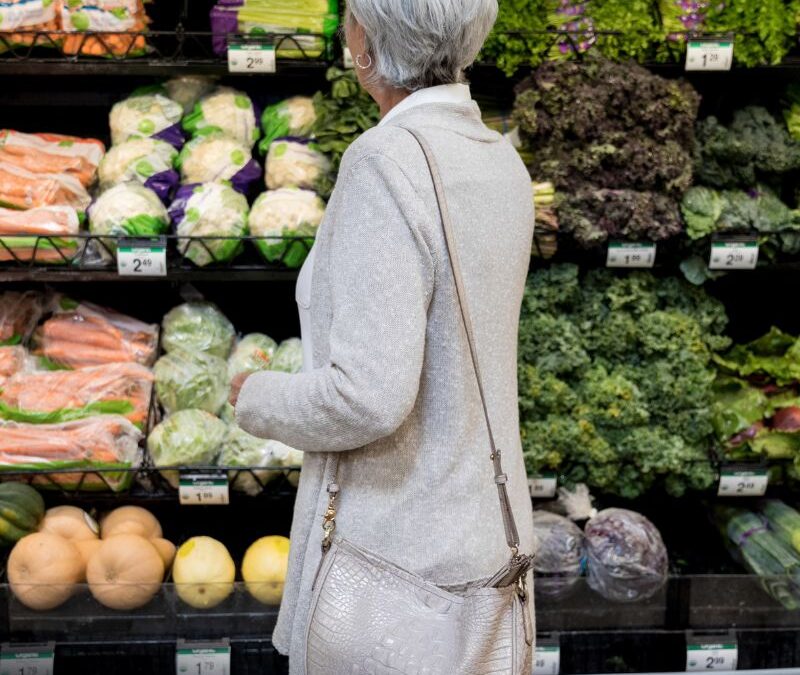Have you been taking stock of how much your waste is costing you? It’s likely been
more complex than you initially thought.
It has been estimated that U.S. food manufacturers produce 53 pounds of food
waste per thousand dollars of company revenue. Close to 95 percent of this material
can and is redirected and/or valorized into animal feed, fertilizer, biofuels or simply
donated to food banks 1 . While significant opportunities lie with doing even more with
these waste streams, as well as reducing what is lost in the first place.
Food manufacturers strengths lean towards developing and producing efficiently
within their supply chains, not resource efficiencies as it relates to food loss and
waste. It’s hard to measure the true economic, social, and environmental cost of
waste from your operations, no matter where it is redirected.
To calculate the cost of waste, you have to look beyond lost material and disposal.
The true cost of waste encapsulates more than waste management, including the
labor and operational costs linked to the processing of material that does not flow
into products. Everything that doesn’t end up in the final product is a material loss
with business cost implications that go beyond the physical waste.
So why is it so hard to know the true cost of waste?
What you’re not seeing with waste
The mass balance approach to accounting for waste involves charting every material
that enters a food supply life cycle stage and measuring what is destined for
products or directed to a material loss destination.
A raw ingredient, say an almond, is grown, harvested, and then brought to the
production line to be husked, de-shelled, and prepared for market. In order to bring
that almond to consumers, a significant amount of waste is created.
Some of this waste is unavoidable. You can’t grow an almond without husk or shell,
so resources invested in infrastructure, labor, and transportation are sunk into the
flow of materials that have no presence in the final product.
It’s hard to account for all the energy and resources wasted on material flows that
are destined elsewhere. According to a 2019 paper by the Economic Research
Service, 15.7 percent of the total U.S. energy budget goes to food production 2.
The inevitable byproducts and loss during production and other stages of the food
supply chain have a real cost that can be measured, within and across the various
life cycle stages your food product traverses, but only if you have a system to
capture and analyze this data. Without visibility, there’s no way for a company to
map the flows and costs of material, which makes it difficult to understand the global
impact and business value of improving waste practices. Something that those in
the food sector are increasingly recognizing 3 .
Finding new opportunities for waste
Data-driven efforts can help make development and production processes more
efficient. Applying similar principles to waste allows the mapping of material loss to
be part of a bigger strategy. In the United States, around two billion pounds of food is
wasted in the processing or manufacturing stage 4 .
Once cost flow is applied to mass balance, it becomes easier to recognize business
processes that reduce waste earlier in the food supply chain. This includes strategies
to cut down waste at the harvest, post-harvest, processing, or distribution life cycle
stages. These new practices can reduce food loss and waste through better design,
production, or operational processes.
Having new insights around waste inform capital expenditure and investment
opportunities. Data flows relating to inventory, material destinations, and business
costs across the food supply chain empower balance sheet decisions, especially as
they align to environmental goals.
Finally, understanding the true cost of waste provides the impetuous for typically
discarded byproducts to be redirected for higher-value destinations. By repurposing
waste materials, companies have an opportunity to recapture some of the revenue
expended during the lifecycle.
DIRECT, by Empauer gives you visibility into the
true cost of waste
Developed in partnership with RMIT University in Melbourne, Australia, DIRECT is a
software solution designed to identify the true cost of waste. With the UN’s
Sustainable Development Goals in mind, and the support of Australia’s Fight Food Waste
CRC, Empauer has created a business-ready tool that quantifies the true cost of waste and
identifies where food and non-food material losses flow across the food supply chain.
Called DIRECT, the solution is aligned to two international standards: The Food Loss
and Waste Accounting and Reporting Standard (FLW Standard), developed by the
global and multi-stakeholder FLW Protocol (convened by the World Resources
Institute); and ISO-14051, a general framework for material flow cost accounting
(MFCA). These alignments provide a level of granular attribution that enables, both,
consistency in output and flexibility in the analysis of material flows and costs, with
regard to product and non-product/waste destinations, in the food supply chain.
Data on material inputs, material destinations, and business costs – within and across life
cycle stages – help food companies measure the direct and indirect costs of material loss,
including material that flows into co-products, food rescue, and waste streams.
The cost of waste doesn’t have to be hard to be hidden
Annually, over 77 million tons of food loss and waste occurs before it ever arrives to
the North American consumer. This represents a major loss across the board 5.
Shifting your perspective to include the true cost of waste allows you to identify
current and future scenarios to support and enhance your company’s efforts.
Whether it be the reduction of food loss, food waste, or both, having visibility into
material and cost flows improves the way you operate.
It’s difficult to quantify all of the economic factors that contribute to the true cost of
waste, but DIRECT enables businesses to map not just waste management costs
and material flows, but also the often ‘hidden’ attributable business costs of those
flows, whether they flow into product or non-product destinations. This
comprehensive understanding of material and cost flows allows you to make data-
driven decisions with real social, economic, and environmental impact.
1. Sources: https://foodwastealliance.org/wp-content/uploads/2020/05/FWRA_BSR_Tier3_FINAL.pdf
https://blog.flexxray.com/blog/the-impact-of-food-waste-and-why-it-matters-to-your-company
2. Source: https://www.ers.usda.gov/publications/pub-details/?pubid=46377
3. Source: https://restaurant.org/fwra-report-food-waste-reduction
4. Source: http://www.fao.org/tempref/docrep/fao/008/y5936e/y5936e00.pdf
5. Source: https://wedocs.unep.org/bitstream/handle/20.500.11822/27688/WasteNot.pdf

